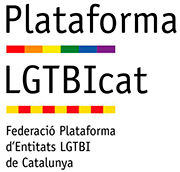Reviewed by Julie Foster
Sunday, January 7, 2007
Transparent
Love, Family and Living the T with Transgender Teenagers
By Cris Beam
HARCOURT; 323 Pages; $25
Real women can have penises. And “the brain and the heart are the only organs with a gender, and … all genital modification or lack thereof is simply a personal aesthetic choice.” These are some of the titillating ideas explored in “Transparent,” Cris Beam’s first book.
But Beam’s engaging narrative does more than just provoke or amuse. It helps readers adjust their assumptions, as Beam admits hers were adjusted, about a world many may be unfamiliar with.
Beam teaches creative writing at the New School and Columbia University and has written for Teen People, Parenting, Out, Mademoiselle and the radio program “This American Life.” But in 1998, she was a freelance magazine writer with spare time. She began volunteering at a high school in Los Angeles for gay and transgender teens.
After 2 1/2 years Beam burned out and quit. But she loved her students, even with “their attitudes, and the occasional danger and regular tragedies,” and she maintained contact with several of the kids.
“Transparent” is the result of those meetings, which occurred from 1998 through the summer of 2005. Beam found her way into this nuanced world through the lives of four transgender girls, Christina, Domineque, Foxxjazell and Ariel, genetic males living as females. She intersperses their stories with edifying facts, figures and definitions, clearing away the distortions and misconceptions embedded in today’s gender-rigid society.
It hasn’t always been so. Beam reveals the “rich history of transsexuality — or cross-gender behavior — documented back to the pre-Christian era.” She cites examples from early American Indian cultures, including the Mohave, Navajo and Lakota, which seem to have not been so hung up on the male-female dichotomies. “For these tribes, there weren’t just two genders posted at opposite ends of a field, with a rule against hanging out in the middle.”
She chronicles the tragic homelessness, common to many transgender teens, which exacerbates their already complicated lives. She weaves in the story of Foxxjazell, “a really great drag mother,” and one of the many “transsexuals who have already been living in their rightful gender and are in the position to teach their younger counterparts.” Beam provides a peek into the transgender worlds in New York, Los Angeles and the special case of San Francisco, “the place where even straight people paint their houses pink,” and where Beam estimates that there may be as many as 15,000 individuals who are gender variant.
A recent New York Times article also detailed the changing attitudes surrounding gender identity in California, citing laws protecting the rights of transgender students and one school in Oakland in which teachers have been instructed to use gender-neutral vocabulary and students are separated by sneaker color rather than gender.
Beam dissects the numerous medical and complex psychological issues that transgender teens face, including transitioning from one sex to the other and exposure to HIV, the virus that causes AIDS. Some chose to receive female hormones legally from physicians such as Dr. Marvin Belzer, head of the division of adolescent medicine at Children’s Hospital Los Angeles. Kids receive regular medical checkups, HIV prevention education and counseling.
But some don’t want to go through the entire process, which takes years. If they can get the money, they choose implants. Still others take a more dangerous route: “pumping, or shooting loose silicone directly into the body where you want it to be larger or fleshier. There are cliques of women who pump and those who don’t, and they often don’t socialize together, as pumping is perceived as a dangerous or sometimes even ‘trashy’ thing to do.”
Five years after Beam began her interviews, things changed. Beam and her partner, Robin, moved back to New York. Domineque committed a serious crime and was sentenced to time at an all-male prison. And 19-year-old Christina, who by then had become a part of Beam’s family, reached her goal of getting a social outreach job with a Latino AIDS organization.
Beam knows how to tell a story. Her tone is evocative and warm without being cloying or judgmental. She delicately parses the story of her own troubled youth, not letting it become the center of attention. Her style grabs the reader at once. The opening scene, describing Santa Monica Boulevard, succeeds in making Los Angeles a living entity rather than a prop for the larger story. Whether Beam is recounting statistics from a study conducted by the Centers for Disease Control and Prevention on homeless youth or how treatment of transgender people in prison violates the Eighth Amendment, she keeps it stimulating. Beam acknowledges that “Transparent” “is merely the story of four transgender young women and their friends living in a particular place at a particular time.” But it’s also a love story about one young woman reaching out and helping another one claim her place in the world.
Julie Foster also reviews books for Publishers Weekly and is a member of the National Book Critics Circle.




